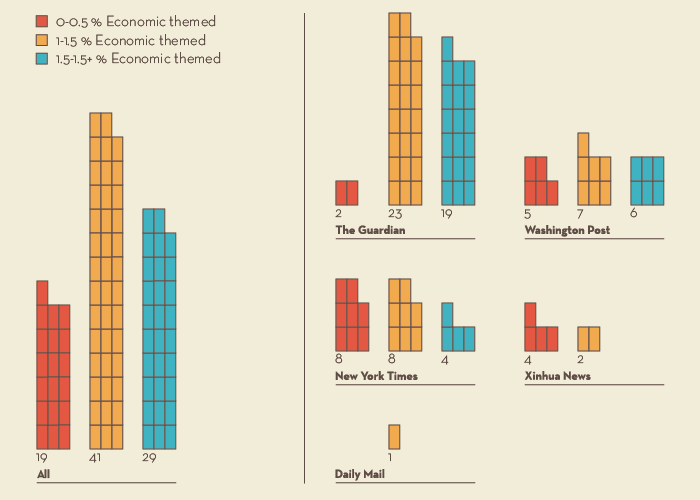Protocol
For the first part, we logged out of Google and went incognito. We used two different queries: "open access debate" and "open access business model"; we tried to consider as many results as possible, only giving up when results were no longer related to OA, this happening beyond the tenth page in both cases.
Each result was opened and analysed with a manual indexing of keywords like pay, fee, charge, publication. The online tool Raw let us visualise how many of these words were found overall and per page. Websites containing each of the pages were then divided into two categories: general or OA specific. At last, contents were classified as neutral or critic.
In order to see how relevant and influential knowledge given to a non academic audience is, we picked six newspapers from the top 10 most read newspapers in the world list published by comScore; actually, four of them were news agencies or editors, but we only picked the single newspapers of the list: People's Daily, The Daily Mail, The Guardian, The New York Times, The Washington Post, Xinhua News Agency.
For each of these, we used their own search function (except for Xinhua where we used LexisNexis because of Xinhua's hard to use research button) and looked for the query "open access" - including the inverted commas. We then looked for the top 100 results per newspaper sorted by relevance, excluding all those previous to October 22nd, 2013 (the date of the Berlin Declaration) to make sure "Open Access" is used in the way we mean now. The People's Daily was then left out as no "open access" result was linked to the publishing method.


